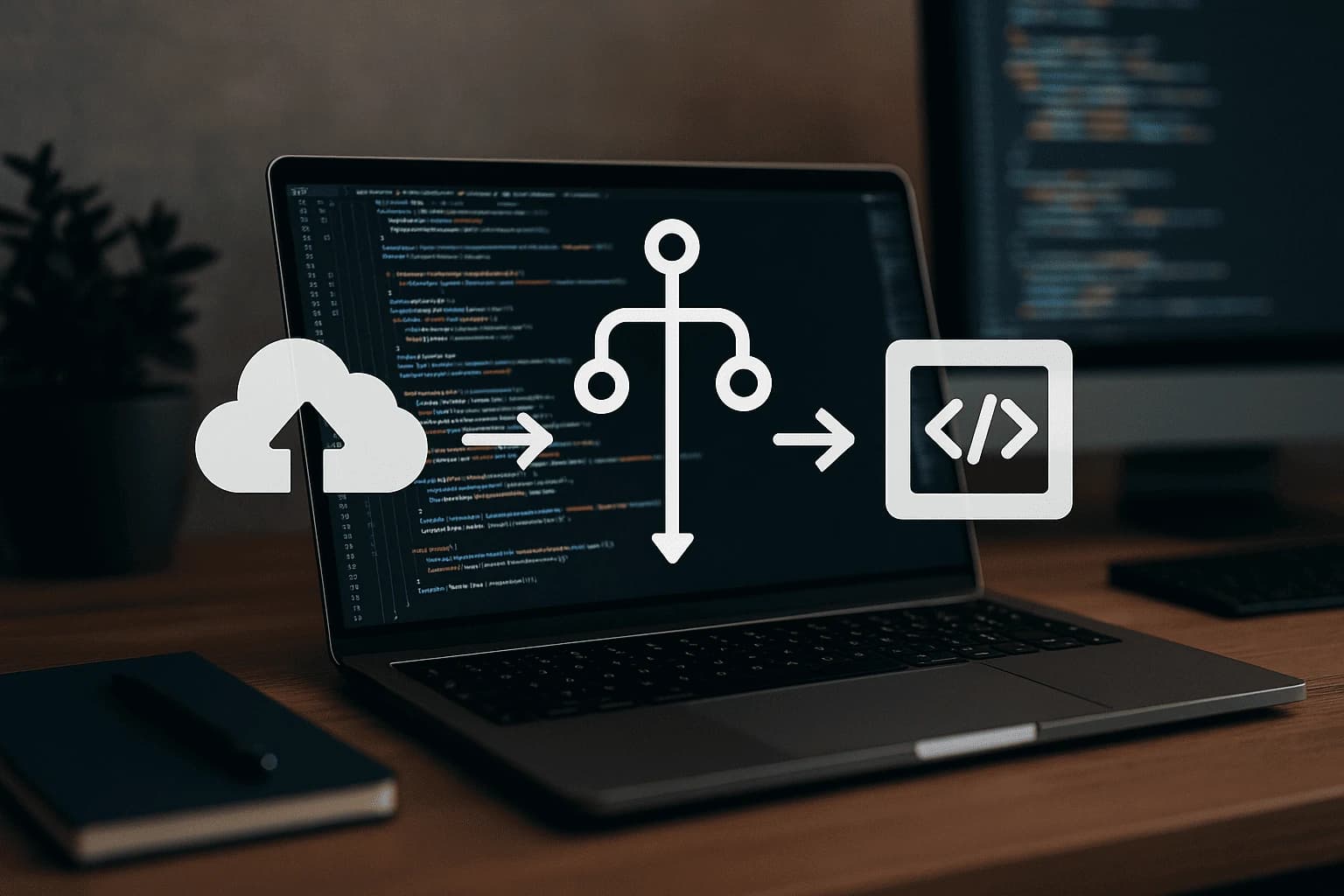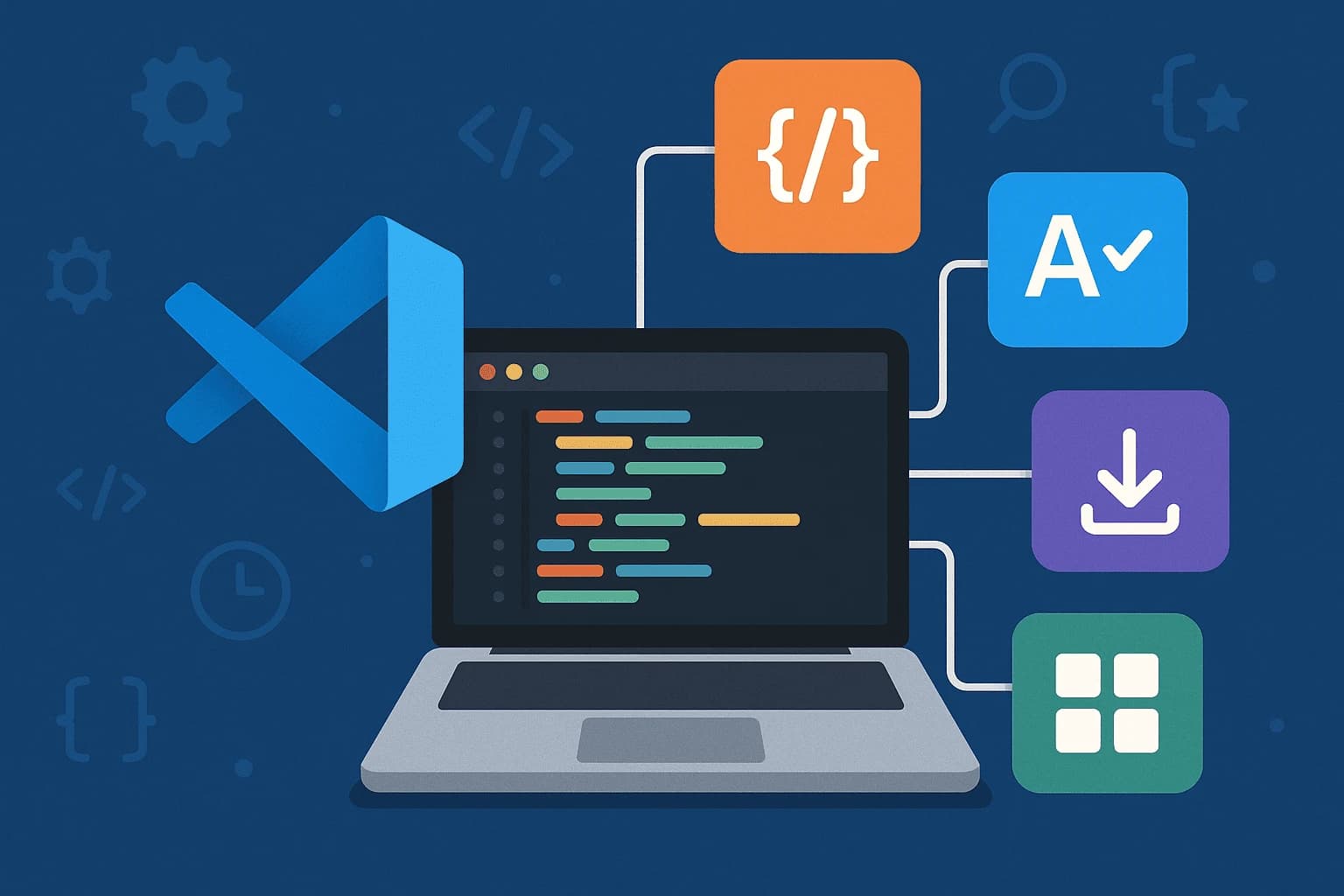
* All product/brand names, logos, and trademarks are property of their respective owners.
In the fast-evolving world of software development, version control systems (VCS) have become the backbone of modern code management. As we step into 2025, the importance of managing code efficiently has reached new heights, driven by the surge in remote collaboration, AI-assisted development, and the continuous integration/deployment (CI/CD) culture dominating DevOps workflows.
Version control is no longer just about keeping track of code changes—it's about enabling seamless collaboration, ensuring stability, and speeding up software delivery. Developers across the globe are working in asynchronous teams, contributing from different time zones, and integrating code into complex systems that demand precision and traceability. Tools like Git, GitHub, GitLab, and newer platforms are not only facilitating these needs but are also evolving with AI-powered features like automated code suggestions, conflict resolution, and intelligent branching recommendations.
Moreover, we’re witnessing an expansion of version control beyond just application code. Infrastructure-as-Code (IaC), data versioning, YAML configurations, and even design files now fall under the umbrella of version-controlled assets. This shift demands a rethinking of how we manage and track digital changes holistically.
In this blog, we’ll explore how version control systems have matured by 2025, what best practices you should adopt to manage code efficiently, and how to choose the right tool for your workflow—whether you’re a solo developer, part of a startup team, or managing enterprise-scale applications. We’ll also dive into how AI is reshaping VCS workflows and what to expect in the near future.
So if you’re looking to stay ahead in the game and streamline your development pipeline, read on. The future of version control is here—and it’s smarter, faster, and more collaborative than ever.
In the early days of version control, centralized systems like CVS and Subversion (SVN) were standard. Developers relied on a single central repository to manage code, which often created bottlenecks and single points of failure. Fast forward to 2025, and distributed version control systems (DVCS) like Git have become the industry norm.
The key shift is in flexibility and collaboration. With DVCS, every developer has a local copy of the entire repository, including its full history. This decentralization empowers teams to work offline, push and pull selectively, and merge changes efficiently. Distributed models also scale better with remote teams, now the norm in tech organizations worldwide.
What’s new? We’re seeing centralized models making a niche comeback, but not in the traditional sense. Hybrid systems are emerging—offering the governance of centralized systems with the agility of distributed workflows, often used in enterprise or regulated environments.
By 2025, tools like GitHub, GitLab, Bitbucket, and Azure DevOps have evolved far beyond basic version control. They now offer:
Built-in CI/CD pipelines: Automate builds, tests, and deployments directly from your version control interface.
Code reviews & merge requests: Streamlined processes for peer reviews, approvals, and feedback loops.
Branch protection rules: Enforce commit policies, test coverage, and reviewer requirements to maintain code quality.
AI-assisted development: Tools like GitHub Copilot now integrate versioning awareness, suggesting context-aware code completions and even conflict resolutions.
Git remains the backbone for most of these platforms, but the UI/UX, integrations, and productivity features vary greatly—giving dev teams a variety of options based on their needs.
2025 has seen exciting entrants and innovations in the VCS landscape. A few to watch:
lakeFS – Designed for data versioning in data science and machine learning workflows.
Dolt – A SQL database that supports Git-like operations, enabling version-controlled relational data.
AI-driven VCS Enhancements – Tools are now using ML models to recommend branch names, categorize commits, and even detect potential merge issues before they happen.
Blockchain-backed VCS – Though still experimental, some projects are exploring immutable, decentralized history logs for high-trust environments.
These innovations reflect a broader shift: version control is no longer just a developer tool—it's a collaboration layer for the entire digital product lifecycle.
One of the biggest mistakes development teams make—even in 2025—is underestimating the power of a clean branching strategy. Whether you’re a solo developer or part of a massive distributed team, a smart branching model keeps your codebase stable and your workflows smooth.
Popular models like Git Flow, GitHub Flow, and Trunk-Based Development each have their strengths. In modern DevOps pipelines, Trunk-Based Development is often favored for its simplicity and compatibility with continuous integration.
But beyond branching lies the art of commit hygiene. This includes:
Writing descriptive commit messages (e.g., “fix: resolve NPE on login page” instead of “fixed stuff”)
Making atomic commits—each commit should represent a single logical change
Regularly squashing unnecessary commits before merging to main branches
These habits not only improve traceability but also enhance collaboration and simplify debugging down the line.
In 2025, AI is not just writing code—it’s reviewing it. Platforms like GitHub Copilot, CodeWhisperer, and GitLab’s AI DevSecOps tools are assisting developers in:
Suggesting review comments
Highlighting potential logic bugs
Recommending refactors
Automatically resolving low-complexity merge conflicts
What’s more, AI tools can analyze code diffs to detect anomalies, identify insecure patterns, and flag areas needing tests. These enhancements are making code reviews faster, smarter, and more effective.
That said, human oversight is still crucial. AI should assist, not replace, peer code review, especially for architectural and business-critical decisions.
Efficient code management now extends beyond application source files. With the rise of Infrastructure-as-Code (IaC), DataOps, and machine learning, versioning has become multi-dimensional.
Infrastructure: Tools like Terraform, Pulumi, and Ansible scripts are stored in Git, versioned with environments, and managed via GitOps practices.
Configurations: YAML, JSON, and environment settings are version-controlled to track changes across deployments.
Data: Platforms like lakeFS, DVC (Data Version Control), and Pachyderm allow teams to manage dataset versions just like source code, crucial for reproducibility in ML pipelines.
Integrating these non-code assets into your VCS ensures full-stack visibility, consistent deployments, and safer rollbacks when things go wrong.
When selecting a version control system in 2025, one size doesn’t fit all. Your ideal tool depends heavily on your team size, project scope, and collaboration model.
Freelancers and Small Teams
Tools like GitHub and Bitbucket offer intuitive UIs, generous free tiers, and seamless integrations. GitHub, with features like Codespaces and Copilot, is a top choice for solo devs or open-source contributors.
Startups and Agile Teams
Startups need speed, automation, and flexibility. GitLab is often favored here for its all-in-one DevOps capabilities—code repo, CI/CD, security scanning, and project management in one dashboard.
Enterprises and Regulated Industries
Larger organizations may prefer Azure DevOps, Perforce (Helix Core), or GitHub Enterprise for granular access control, compliance support, audit trails, and large binary file handling. Subversion still finds a place in legacy-heavy sectors where central governance is key.
Choosing the right VCS isn’t just about features—it’s about aligning with your development philosophy and team dynamics.
In 2025, if your version control doesn’t play nicely with your CI/CD stack, you’re already behind.
CI/CD Pipelines: Most tools integrate out-of-the-box with popular CI/CD services like GitHub Actions, GitLab CI, Jenkins, CircleCI, and AWS CodePipeline. The ability to trigger builds, run tests, and deploy on commit saves time and ensures consistency.
DevOps Toolchains: VCS tools now sync deeply with DevOps platforms, enabling GitOps workflows where deployments are driven by Git events. Changes in code or infrastructure configurations trigger automated rollouts via ArgoCD or Flux.
Cloud Provider Ecosystems: Cloud-native repositories like AWS CodeCommit or Azure Repos are optimized for integration with their respective ecosystems. They offer IAM-based access controls, native encryption, and seamless cloud pipeline triggers.
These integrations reduce context switching, automate delivery, and improve overall software lifecycle velocity.
Security and scalability are mission-critical in a modern VCS setup.
Security: Look for support for SSO/SAML, fine-grained permissions, encrypted storage, vulnerability scanning, and audit logging. GitHub’s security advisories and GitLab’s static/dynamic analysis tools are leading examples.
Scalability: If you're managing large monorepos or binaries (e.g., game assets, CAD files), tools like Perforce, Git LFS, or Plastic SCM offer optimized handling.
Performance: For distributed teams, geo-replication, caching, and edge acceleration (like GitHub’s CDN-backed fetches) can drastically reduce clone/pull times.
In short, the right VCS tool doesn’t just help you write better code—it protects your IP, scales with your growth, and supports a faster path to production.
Version control systems have come a long way from merely tracking file changes. In 2025, they are foundational to how developers build, collaborate, and ship software globally. Whether you’re pushing code to production, experimenting in a feature branch, or tracking configuration updates, your VCS is the single source of truth that powers your entire development lifecycle.
As we’ve seen, modern tools like GitHub, GitLab, and Bitbucket offer much more than repositories—they’re integrated platforms for automation, collaboration, and security. The rise of AI-assisted workflows is reshaping how teams approach code reviews, conflict resolution, and even commit structuring, making development more intelligent and efficient than ever.
Best practices like clear commit messages, smart branching, and versioning beyond just code help keep your projects stable, auditable, and deployment-ready. From small-scale apps to enterprise-scale infrastructures, choosing the right tool—and using it well—can dramatically improve development speed, quality, and collaboration.
As we look ahead, the future of version control will likely continue expanding—deeper into data science, infrastructure, and even non-technical domains. The tools will get smarter, more integrated, and more adaptive to global development trends.
So whether you’re just starting out or re-evaluating your current workflow, now’s the time to invest in better version control practices. Choose tools that align with your needs, embrace AI-powered capabilities, and don’t just manage code—manage it efficiently, securely, and collaboratively.

5 December 2025
19 November 2025
No comments yet. Be the first to comment!